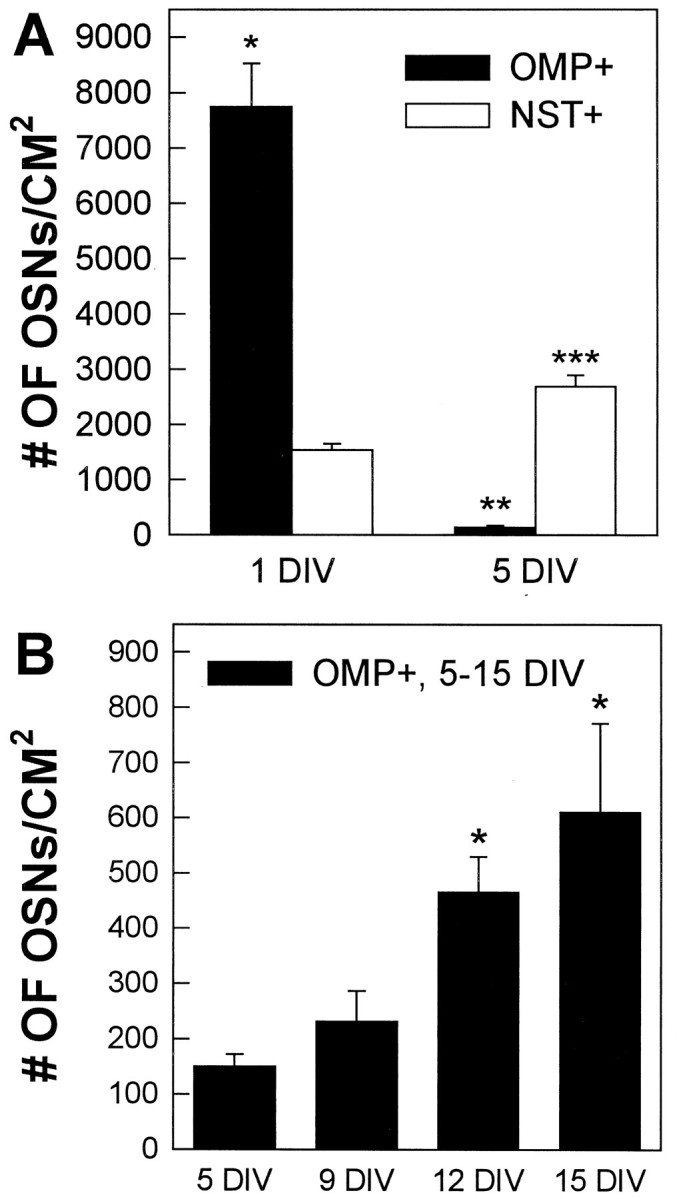Fig. 2.

OMP+ OSNs disappeared between 1 and 5 DIV, whereas immature OSNs increased in number. OMP+ neurons increased in number after a low at 5 DIV. Error bars represent mean ± SEM.A, At 1 DIV, the numbers of mature OMP+ OSNs/cm2 were fivefold greater than those of immature NST+ OSNs (*p < 0.01, t test). We believe this reflects the normal condition of the adult olfactory epithelium, where the majority of OSNs are OMP+ (Verhaagen et al., 1990). The number of OMP+ OSNs dropped by 52-fold between 1 and 5 DIV (**p < 0.05, Mann–Whitney rank sum test). Immature NST+ OSNs, however, increased in numbers by 1.7-fold between 1 and 5 DIV (t test, p < 0.01). Thus, by 5 DIV, the ratio of mature to immature OSNs had shifted; numbers of NST+ neurons were 17-fold higher than OMP+ OSNs (***p < 0.05, Mann–Whitney rank sum test).B, Mature OMP+ OSNs/cm2increased over time in culture. At 12 and 15 DIV, but not at 9 DIV, the numbers of OMP+ OSNs differed significantly from 5 DIV values (paired samples t test, p < 0.05).
